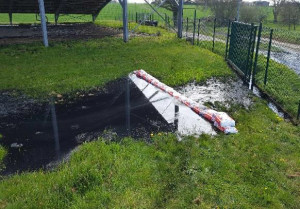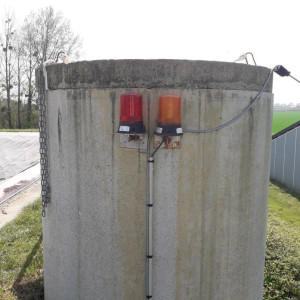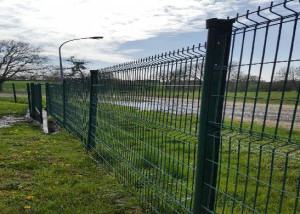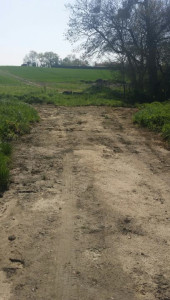At 1:30 p.m., a subcontractor at a methanation facility informed the operator of a digestate overflow in the lagoon located in the lower part of the site towards the LONGUENAIS. The foreman stopped the transfer pump feeding the lagoon with digestate and asked the pumping and cleaning company to intervene. The digestate was confined to the site using a dam consisting of bags of salt. The flow into the river was stopped at around 2:00 p.m. The entire area was pumped into the river and the pumping pit of the lagoon in question. The emergency services arrived on site at around 2:10 p.m. and began monitoring the river; samples were taken for analysis. The operator informed nearby residents of the situation and monitored for any signs of aquatic mortality over 48 hours. The digestate was recovered by stripping the topsoil for agricultural reuse. Blinding gravel was applied throughout the cleaned area.
In all, 60 m³ of digestate was discharged into the river. During a visit a few days later, the Classified Installations Inspectorate noted aquatic mortality over 14 km (20 dead fish every 10 m were noted over the first 3 km). According to the press, an unusual colour was noticeable (a black and odorous substance). The local fishing federation filed a complaint.
At around 8:30 a.m., during the site tour, the team leader noted that the maximum level of the lagoon at the bottom of the area had been reached (indicated by a flashing light with a red indicator). He considered that the lagoon’s fill level complied with the standard (30 cm from the edge) and that digestate did not need to be added. The operators had not been given any instructions on this subject. At 9:30 a.m., an operator started the digestate transfer pump linking the upper lagoon (5,000 m³) to the lower lagoon (2,000 m³) without first informing the foreman and having first checked the fill level in the lower lagoon. The operator then left for his lunch break without checking the transfer. However, verification of the lagoon’s level and a check of the transfer were part of the procedures in force. The high-level alarm in the lower lagoon did not sound, and the operator did not regularly check this alarm and was unable to say when it had failed. According to the operator, a maintenance operation conducted a month before the accident may have been the cause of the failure.
A formal notice is issued based on the various non-compliances observed:
- the operator did not have instructions on what to do in the event of a lagoon overflow;
- the operator does not regularly check the alarm system and was unable to identify the duration of the malfunction;
- the operator did not have suitable means to contain the spill (absorbent products, etc.) and used makeshift means (bags of salt to prevent the road from freezing);
- the layout of the lagoons, located upstream of the creek in a sloping area, did not limit water pollution in an overflow situation.
Following the event, the operator developed a control system to automatically shut off the transfer pump when the target filling level is reached. A procedure was compiled on how to use the pump during transfer operations, and a process was also drawn up for managing accidental spills.







